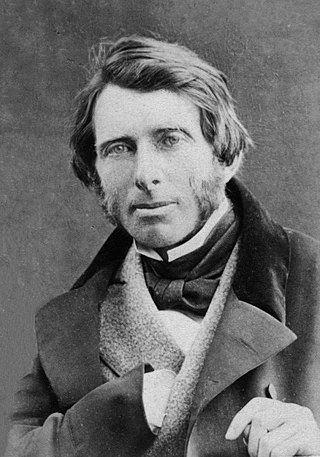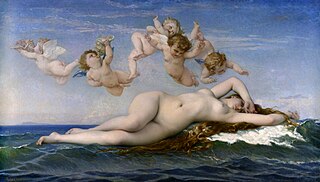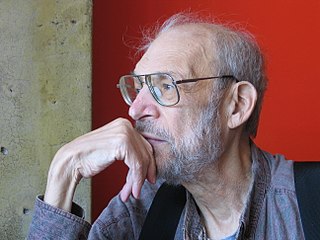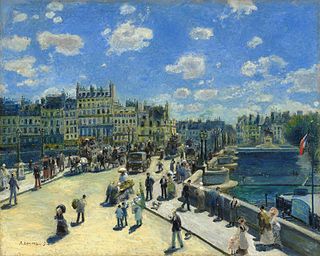
James Henry Rubin is an American art historian and a professor of history at Stony Brook University in Stony Brook, New York.

James Henry Rubin is an American art historian and a professor of history at Stony Brook University in Stony Brook, New York.
James Rubin was born on May 4, 1944. He was educated at Phillips Andover, Yale (B.A.), Harvard (PhD) and the Institut d'Art et d'Archéologie of the Sorbonne in Paris (license-ès-lettres).
Prior to Stony Brook, he taught at Harvard University, Boston University and Princeton University. At Stony Brook, he was department chair for fifteen years. He also taught part-time for many years at The Cooper Union, New York City.
He has published over sixty articles and essays on subjects ranging from the eighteenth century to the present. He is the author of 13 books: Eighteenth Century French Life Drawing (1977), Realism and Social Vision in Courbet and Proudhon (1981), Eugène Delcaroix's 'Dantebarke' (1987), Manet's Silence and the Poetics of Bouquets (1994), Courbet (1997), Impressionism (1999), Nadar (2001), Impressionist Cats and Dogs: Pets in the Painting of Modern Life (2003), Impressionism and the Modern Landscape: Productivity, Technology and Urbanization from Manet to Van Gogh (2008), Manet: Initial M, hand and eye (2010, French edition 2011); Realism and Music: Courbet, Berlioz, Wagner and Relations between the Arts in Nineteenth-Century France (2012, e-book); and How to Read Impressionism: Ways of Looking (2013); and an edited volume, Rival Sisters: Art and Music at the Birth of Modernism, 1815-1915 (2014). His books have been translated into several languages including, French, Greek, Korean, Japanese, and Dutch.
He has served on the International Committee of the College Art Association (CAA) and represented the CAA at the United Nations. He is a member and Vice President of the Société Paul Cézanne, based in Aix-en-Provence, France. At Stony Brook, he is an affiliate of the Department of European Languages, the Department of Cultural Studies and Critical Analysis, and the Department of Philosophy. When he teaches graduate seminars at Stony Brook's annex campus in Manhattan, they are cross-listed with Philosophy as part of Stony Brook’s Art and Philosophy program. In 2008, he was a Research Visiting Professor at the Université de Paris I, Institut national d'histoire de l'art in Paris. He is the winner of an American Council of Learned Societies Travel Grant and as of 2016 was on leave as a National Endowment for the Humanities Public Scholar. [1]
He is a dual French-U.S. citizen, speaking fluent French and English.[ citation needed ] He travels frequently, lectures and collaborates internationally, while living in New York City and in Mittelbergheim, Alsace.[ citation needed ] His son is the filmmaker Henry-Alex Rubin.[ citation needed ]

Édouard Manet was a French modernist painter. He was one of the first 19th-century artists to paint modern life, as well as a pivotal figure in the transition from Realism to Impressionism.

Impressionism was a 19th-century art movement characterized by relatively small, thin, yet visible brush strokes, open composition, emphasis on accurate depiction of light in its changing qualities, ordinary subject matter, unusual visual angles, and inclusion of movement as a crucial element of human perception and experience. Impressionism originated with a group of Paris-based artists whose independent exhibitions brought them to prominence during the 1870s and 1880s.

The Salon des Refusés, French for "exhibition of rejects", is generally known as an exhibition of works rejected by the jury of the official Paris Salon, but the term is most famously used to refer to the Salon des Refusés of 1863.

Jean Désiré Gustave Courbet was a French painter who led the Realism movement in 19th-century French painting. Committed to painting only what he could see, he rejected academic convention and the Romanticism of the previous generation of visual artists. His independence set an example that was important to later artists, such as the Impressionists and the Cubists. Courbet occupies an important place in 19th-century French painting as an innovator and as an artist willing to make bold social statements through his work.

An art critic is a person who is specialized in analyzing, interpreting, and evaluating art. Their written critiques or reviews contribute to art criticism and they are published in newspapers, magazines, books, exhibition brochures, and catalogues and on websites. Some of today's art critics use art blogs and other online platforms in order to connect with a wider audience and expand debate.

L'Origine du monde is a picture painted in oil on canvas by the French painter Gustave Courbet in 1866. It is a close-up view of the vulva and abdomen of a naked woman, lying on a bed with legs spread.
Michael Martin Fried is a modernist art critic and art historian. He studied at Princeton University and Harvard University and was a Rhodes Scholar at Merton College, Oxford. He is the J.R. Herbert Boone Professor Emeritus of Humanities and Art History at the Johns Hopkins University, Baltimore, Maryland, United States.
19th-century French art was made in France or by French citizens during the following political regimes: Napoleon's Consulate (1799–1804) and Empire (1804–14), the Restoration (1814–30), the July Monarchy (1830–48), the Second Republic (1848–52), the Second Empire (1852–71), and the first decades of the Third Republic (1871–1940).

Donald Kuspit is an American art critic and poet, known for his practice of psychoanalytic art criticism. He has published on the subjects of avant-garde aesthetics, postmodernism, modern art, and conceptual art.
Timothy James Clark is a British art historian and writer. He taught art history in a number of universities in England and the United States, including Harvard and the University of California, Berkeley.

The Birth of Venus is a painting by the French artist Alexandre Cabanel. It was painted in 1863, and is now in the Musée d'Orsay in Paris. A second and smaller version from ca. 1864 is in Dahesh Museum of Art. A third version dates from 1875; it is in the Metropolitan Museum of Art in New York City.

Frank M. Snowden Jr., was an American historian and classicist, best known for his study of black people in classical antiquity. He was a Distinguished Professor emeritus of classics at Howard University. He also served as a delegate to UNESCO and as a cultural attaché to the United States embassy in Rome.
Hugh J. Silverman was an American philosopher and cultural theorist whose writing, lecturing, teaching, editing, and international conferencing participated in the development of a postmodern network. He was executive director of the International Association for Philosophy and Literature and professor of philosophy and comparative literary and cultural studies at Stony Brook University, where he was also affiliated with the Department of Art and the Department of European Languages, Literatures, and Cultures. He was program director for the Stony Brook Advanced Graduate Certificate in Art and Philosophy. He was also co-founder and co-director of the annual International Philosophical Seminar since 1991 in South Tyrol, Italy. From 1980 to 1986, he served as executive co-director of the Society for Phenomenology and Existential Philosophy. His work draws upon deconstruction, hermeneutics, semiotics, phenomenology, aesthetics, art theory, film theory, and the archeology of knowledge.

Albert Boime, was an American art historian and author of more than 20 art history books and numerous academic articles. He was a professor of art history at the University of California, Los Angeles, for three decades, until his death.

The Absinthe Drinker is an early painting by Édouard Manet, executed c. 1859, considered to be his first major painting and first original work. It is now in the collection of the Ny Carlsberg Glyptotek, in Copenhagen.

Realism was an artistic movement that emerged in France in the 1840s, around the 1848 Revolution. Realists rejected Romanticism, which had dominated French literature and art since the early 19th century. Realism revolted against the exotic subject matter and the exaggerated emotionalism and drama of the Romantic movement. Instead, it sought to portray real and typical contemporary people and situations with truth and accuracy. It did not avoid unpleasant or sordid aspects of life. The movement aimed to focus on unidealized subjects and events that were previously rejected in art work. Realist works depicted people of all social classes in situations that arise in ordinary life, and often reflected the changes brought by the Industrial and Commercial Revolutions. Realism was primarily concerned with how things appeared to the eye, rather than containing ideal representations of the world. The popularity of such "realistic" works grew with the introduction of photography—a new visual source that created a desire for people to produce representations which look objectively real.
Kermit Swiler Champa was an American art historian and educator. A scholar of Impressionism, Champa was the Andrea V. Rosenthal Professor of the History of Art and Architecture at Brown University from 1970 to 2004.

Diego Martelli was an Italian art critic who was one of the first supporters of Impressionism in Italy. He was a defender and associate of the Tuscan artists the Macchiaioli, whom he often hosted at his estate in Castiglioncello.
Norma Broude is an American art historian and scholar of feminism and 19th-century French and Italian painting. She is also a Professor Emerita of art history from American University. Broude, with Mary Garrard, is an early leader of the American feminist movement and both have redefined feminist art theory.

Le Pont-Neuf is an 1872 oil-on-canvas painting by the French artist Pierre-Auguste Renoir. It is held by the National Gallery of Art in Washington, D.C.